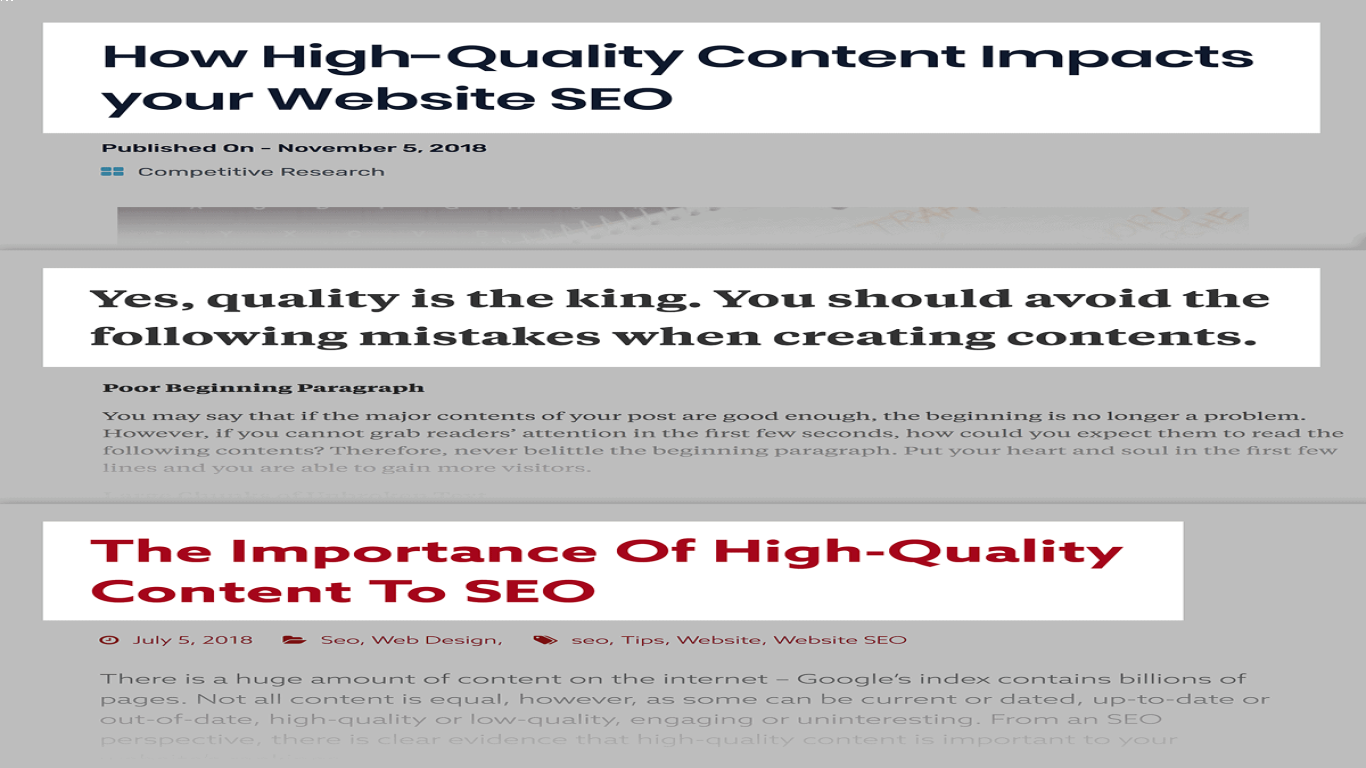Best Practices for Structuring a High Ranking SEO Website
Best Practices for Structuring a High Ranking SEO Website
Creating a website that ranks high on search engines is a crucial goal for any business or individual seeking online presence. With the right SEO strategies, your website can become a powerhouse of traffic, attracting thousands of visitors each day. In this article, we will delve into the best practices for structuring a high ranking SEO website that will keep you ahead of the competition.
Understanding the Importance of SEO for Website Success
Search Engine Optimization (SEO) is the practice of enhancing a website to improve its visibility and ranking on search engines like Google, Bing, and Yahoo. Effective SEO can drive more organic traffic to your site, leading to increased brand exposure, higher conversion rates, and ultimately, more revenue. To structure a high ranking SEO website, understanding the nuances of SEO is imperative.
Conduct Thorough Keyword Research to Find Your Niche
To structure a high ranking SEO website, conducting in-depth keyword research is one of the first steps. By pinpointing the right keywords, you can create content that resonates with your target audience.
- Use tools like Google Keyword Planner, SEMrush, or Ahrefs.
- Focus on long-tail keywords that have lower competition.
- Analyze competitors to see which keywords they rank for.
- Update keywords regularly to adapt to changing trends.
Design a User-Friendly Website Architecture
A well-structured website architecture is paramount in ensuring easy navigation for both users and search engines. For a high ranking SEO website:
- Use a clear, hierarchical site structure with logical categories and subcategories.
- Ensure every page is accessible within three clicks from the homepage.
- Implement breadcrumbs for easier navigation.
- Create a well-organized URL structure that includes main keywords.
Create Quality Content that Engages and Informs
Content is king in the realm of SEO. High-quality content is essential for a high ranking SEO website. To produce top-notch content:
- Focus on creating original, informative, and engaging content.
- Ensure content is SEO-friendly by including keywords naturally.
- Use headings and subheadings (H1, H2, H3) to break up text.
- Incorporate media like images, videos, and infographics to enhance engagement.
Ensure Mobile-Friendliness for Broader Reach
In today's mobile-centric world, a high ranking SEO website must be mobile-friendly. Google prioritizes mobile-first indexing, which means:
- Use responsive design to adapt to different screen sizes.
- Optimize page speed on mobile devices.
- Avoid intrusive pop-ups that hinder user experience.
- Test mobile performance using tools like Google's Mobile-Friendly Test.
Optimize On-Page SEO Elements for Enhanced Visibility
On-page SEO is pivotal in structuring a high ranking SEO website. Key practices include:
- Optimize title tags and meta descriptions with keywords.
- Use Alt text for images to improve accessibility and ranking.
- Implement internal and external linking strategies.
- Utilize header tags to emphasize content structure.
Leverage Technical SEO for Improved Search Performance
Technical SEO ensures that search engines can easily crawl and index your site. For a high ranking SEO website:
- Generate an XML sitemap and submit it to search engines.
- Use robots.txt to control search engine crawling.
- Implement HTTPS for secure browsing.
- Optimize site speed with caching, image optimization, and content delivery networks (CDNs).
Enhance User Experience to Keep Visitors Engaged
User experience plays a crucial role in maintaining a high ranking SEO website. Factors to focus on include:
- Ensure fast page loading times.
- Provide easy navigation and an intuitive user interface.
- Use clear call-to-action (CTA) buttons to guide users.
- Reduce bounce rates by offering relevant content quickly.
Utilize Schema Markup for Rich Snippets and Better Visibility
Schema markup can enhance how your website appears in search results, providing rich snippets that can boost clicks on your site. For a better-structured SEO website:
- Implement schema markup to highlight reviews, events, and products.
- Use Google's Structured Data Testing Tool to verify schema implementation.
Regularly Update and Maintain Your Website for Continued Success
A high ranking SEO website requires constant upkeep. Best practices include:
- Regularly update content to keep it fresh and relevant.
- Monitor site performance and resolve technical issues swiftly.
- Track keyword rankings and adjust content strategy as needed.
- Use tools like Google Search Console to monitor search performance.
Conclusion: Building a Strong Foundation for Your SEO Website
By following these best practices for structuring a high ranking SEO website, you lay a robust foundation for online success. Through diligent keyword research, user-friendly architecture, quality content, mobile optimization, and continuous updates, your website can achieve and maintain high rankings. Remember, mastering SEO is an ongoing journey that requires patience, persistence, and adaptability to ever-evolving trends.
FAQs
-
Why is keyword research important for SEO? Keyword research helps you understand what your audience is searching for, allowing you to create targeted content that improves visibility and ranking.
-
How does mobile-friendliness affect SEO rankings? Mobile-friendliness is crucial as Google uses mobile-first indexing, meaning it primarily uses the mobile version of a site for ranking.
-
What role does content play in SEO? High-quality content is vital as it engages visitors, encourages sharing, and signals relevance to search engines.
-
Why should I worry about site speed? Site speed affects user experience and is a ranking factor, with faster sites favorably ranked by search engines.
-
What is schema markup, and how does it improve SEO? Schema markup is code that helps search engines understand your site’s content, resulting in enhanced search result listings known as rich snippets.
#seo #highranking #websitestructure #bestpractices #searchoptimization
